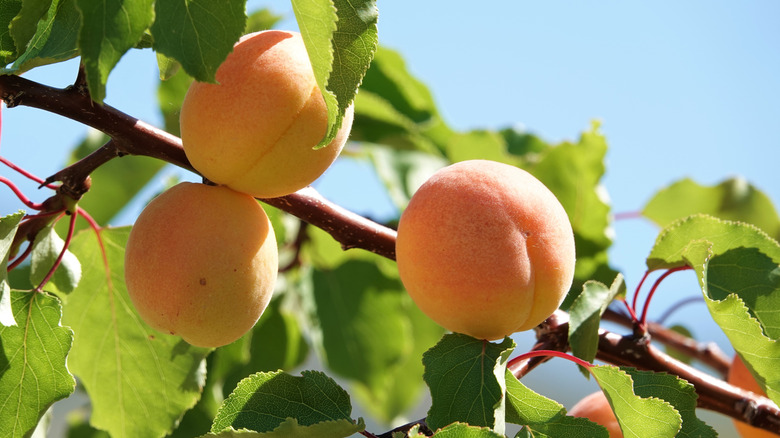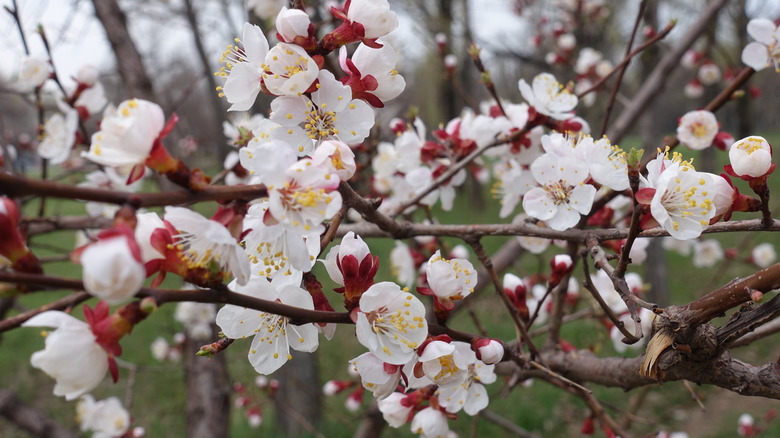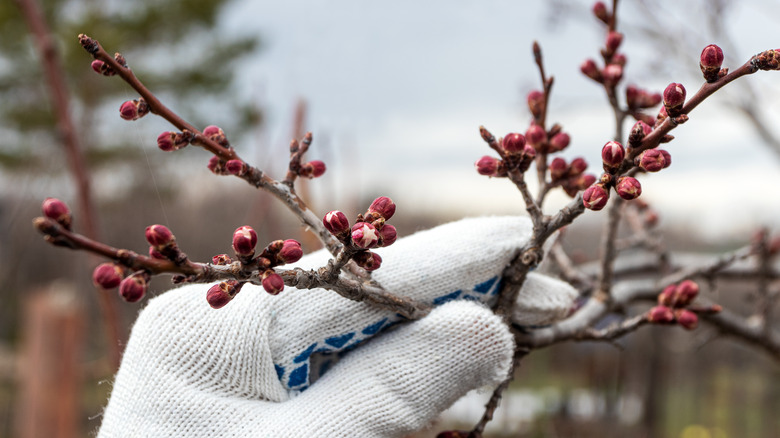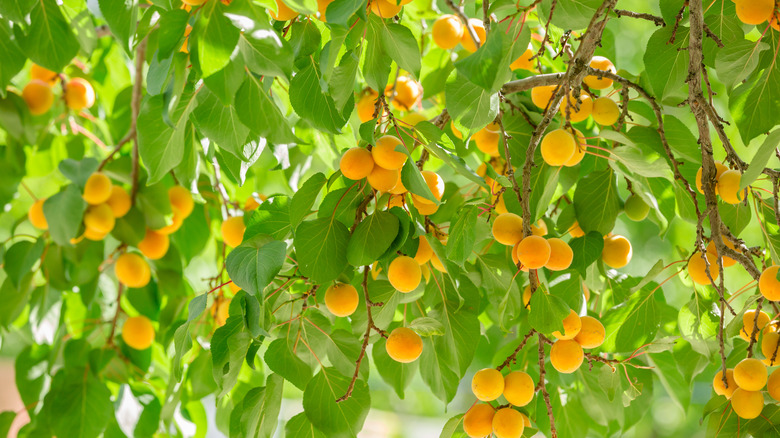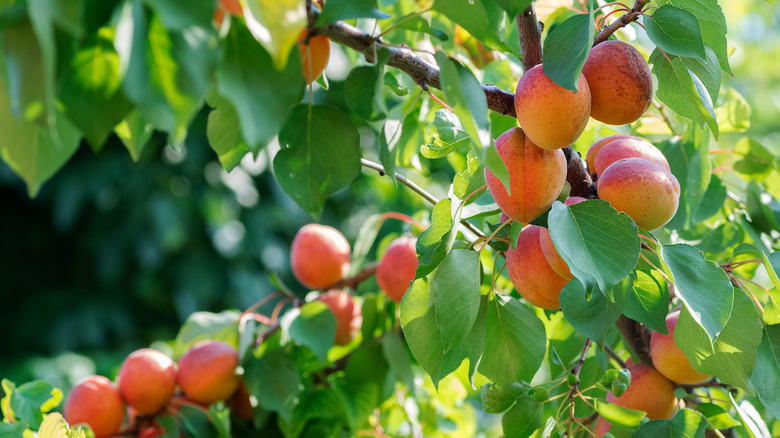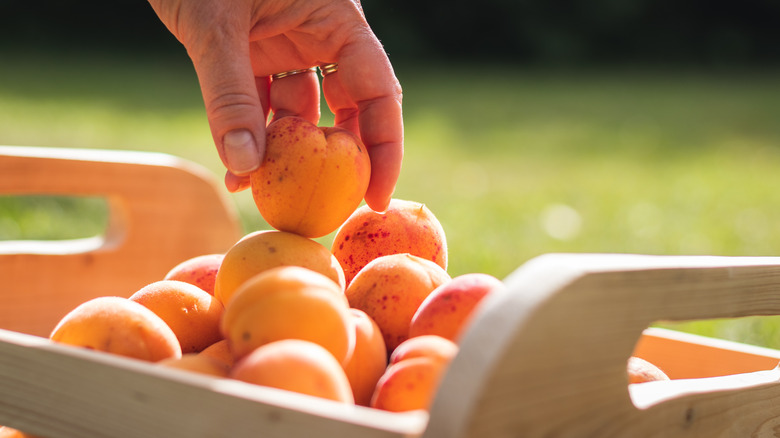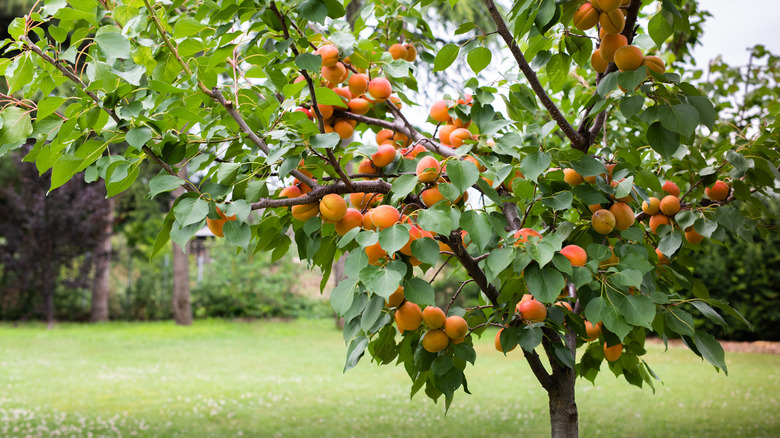Apricot Tree: Everything You Should Know Before Planting
Prunus armeniaca, or the apricot tree, is a deciduous fruit tree that produces fleshy yellow, orange, or red-colored fruit, explains North Carolina State Extension. The tree features green, tooth-edged leaves that alternate on its branches, pink and white blossoms, and poisonous seeds and stems despite bearing delicious edible fruit.
According to NPR, these trees date back as far as 2000 BC. They are thought to be native to China, wherefrom they spread around Europe and other parts of Asia. Later, apricot trees made their way across the ocean to the North American colonies where they were cultivated in warm regions such as California. Apricots are related to other pitted fruit such as cherries and peaches and require similar conditions to grow. They need plenty of sunshine, water, and warm temperatures. As long as you can provide your apricot trees with these minimum requirements, you will be well on your way to owning your own tiny orchard.
How to use in garden
Apricot trees are best grown outdoors in the garden, as long as you live in USDA hardiness zones 5 through 9, recommends Farm & Animals. Most varieties of these trees can withstand temperatures as cold as 0 degrees Fahrenheit, but they do prefer warmer weather. Before you plant your tree, be sure to consider the weather in your area. If you experience long, cold winters, you may want to grow yours in a container so that you can bring it inside when temperatures drop.
According to Farm & Animals, apricot trees can grow very tall, sometimes as large as 30 feet high when they reach maturity, making them a great focal point in a yard. You need to account for this height before you put the sapling in the ground and be sure that your tree has plenty of room to grow and spread out, so it can deliver you delicious apricots throughout the summer.
How to grow an apricot tree
Apricot trees are easiest to grow from a sapling, but if you are willing to put in the work, they can also be grown from seeds or cuttings. To grow the tree from a seed, you first need to assemble a container of water, a seed starter, some well-draining soil, and a small pot. Soak your seeds in water for 25 hours to start, says ehowgarden in their handy youtube tutorial. Fill your pot with soil and seed starter mix. Dig a small hole in the soil about an inch deep and cover the seed with dirt. Leave your pot in a shaded area and keep it moist for about six weeks or until the seed germinates.
Propagating an apricot tree from cuttings takes a little more time. You'll need sterile shears, rooting hormone, and a sand and peat mixture for soil. Take cuttings from your mature tree that are about 6 to 9 inches in length and have three or four leaf nodes, explains Garden Guides. Then, pick off all the leaves from the bottom half of your cutting and dip it in the rooting hormone. With a finger, press a hole into your sand and peat mixture, put the cutting into the soil, and firm it around the base. Keep your cuttings in a warm, moist environment until they take root.
How to care for an apricot tree
Apricot trees are easy to care for if you know what you're doing. They need full sun which is easy enough to provide if you are planting yours outdoors. Make sure that there are no tall trees or structures nearby that will shade the apricot tree while it's growing. If you are keeping yours indoors you can choose to keep it near a south-facing window that will provide it with sunlight during most of the day.
You will need to implement a watering schedule for your apricot tree. This is a thirsty plant that will require even more water when it is young. When you first plant your apricot tree, make sure that its soil is moist but not soaked at all times. This helps the roots take hold while they are short, says Farm & Animals. As your tree matures it will need less frequent watering about once every two weeks. Experienced gardeners often install drip lines to assist them in their watering schedule for these types of trees.
Apricot tree varieties
In the Prunus genus, there are 336 distinct species, states Royal Botanical Gardens KEW. Some of these species include plums (P. domestica), peaches (P. persica), and black cherries (P. serotina). All plants in this genus are types of trees and shrubs that vary in height, color, and care requirements. Prunus armeniaca is known as the common apricot, but there are several other species of apricots. Within the armeniaca species, though, there are also hundreds of varieties. Here are some of the most common, as described by Covet Garden.
-
Prunus armeniaca Moorpark — This variety of apricot tree is frost-hardy and strong against harsh winds. During its blooming season, it will show off beautiful pink and white flowers.
-
Prunus armeniaca Poppicot — This tree requires a lot of pruning as it is a fast-growing variety. It produces some of the largest apricots.
-
Prunus armeniaca Puget Gold — Born in the Pacific Northwest. The fruit is small but flavorful, and the tree itself is usually smaller reaching only 15 feet high at maturity.
-
Prunus armeniaca Loring — A strong variety of apricot trees with cold-hardy roots.
-
Prunus armeniaca Nemaguard — This type of tree can't handle very cold weather, but is resistant to insects and parasites.
Is an apricot tree toxic?
Apricot trees, though their fruit is delicious, are extremely toxic if you or your pet take a bite out of the wrong part. North Carolina State Extension warns that ingesting stems, leaves, or seeds from an apricot tree can lead to serious health issues such as spasms, respiratory failure, or even a coma. Seeds from the fruit contain laetrile which is a dangerous chemical compound used sometimes for treating cancer. The seeds, along with the leaves and the stems, also contain cyanide which is famously fatal.
Interestingly, apricot kernel oil has some possible health benefits. Though the stone in the center of the fruit can be deadly, the oil extracted from it can help with several skin conditions such as fine lines, uneven tone, and dryness, according to Skincare Lab. Apricot oil is also full of essential vitamins including vitamins C, K, and E, which help in restoring the skin and fighting against aging.
How to repot an apricot tree
As told by Minneopea Orchards, apricot trees can be grown just as beautifully in containers as they do out in the garden. They make wonderful ornamental plants for indoor use or in your yard. The tree is easily repotted when it outgrows its container, which usually happens once every two or three years.
To repot your apricot tree you will need two items: a pot that is one size larger than the previous one and some well-draining soil. Start the process by removing your tree from its previous pot. Tree 2 My Door recommends making sure that its soil is moist before doing this for easier removal and to reduce transplant shock. Fill your new pot about a third of the way full with fresh soil, then place your tree inside. Backfill with more fresh soil until it reaches the top of the container and press the soil around the base of the tree until it's secure in its new home. Finally, water your apricot tree deeply before placing it in a sunny spot.
